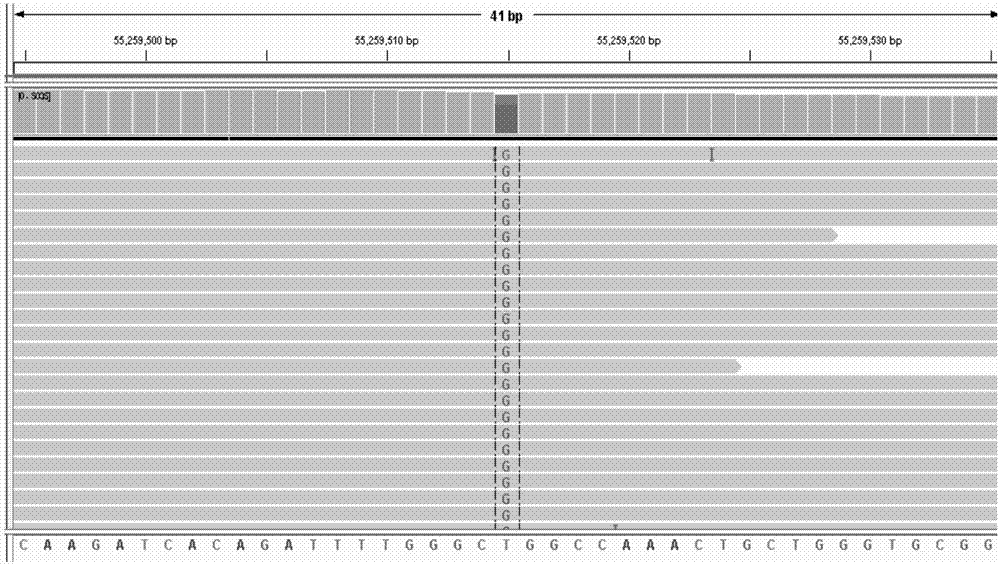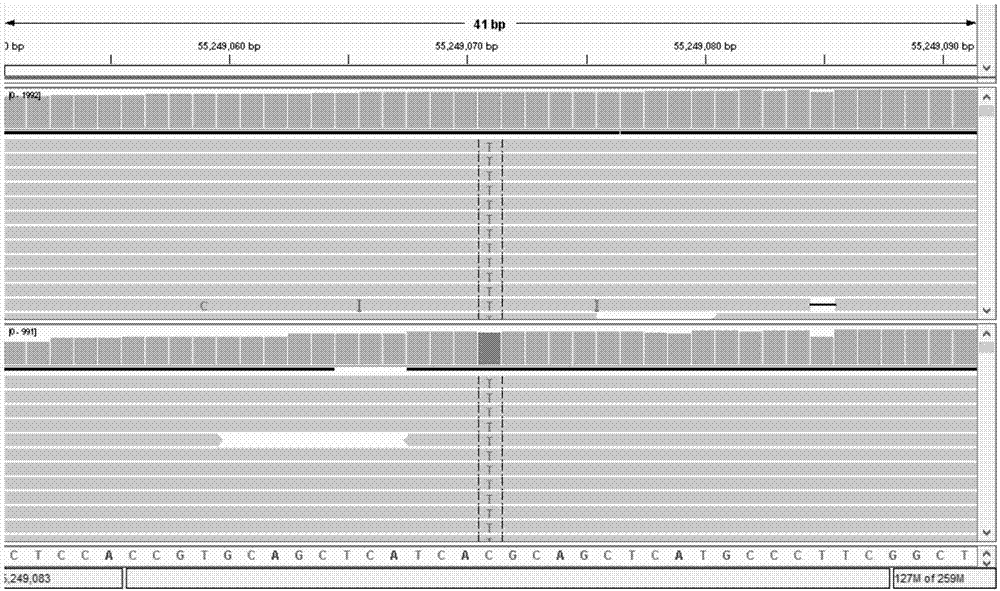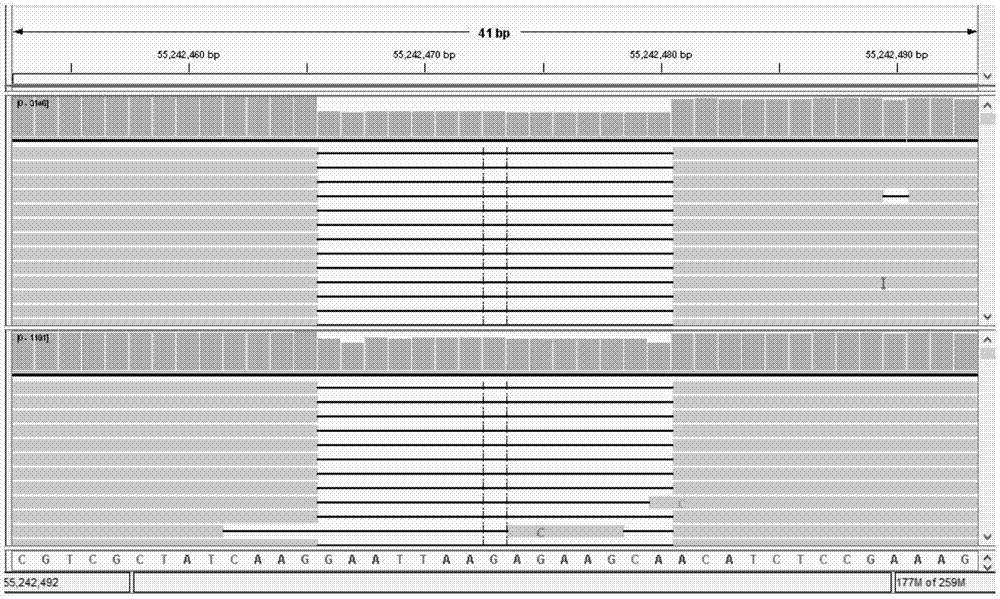Targeted capturing and sequencing kit for 33 lung cancer-related genes and application of targeted capturing and sequencing kit
A targeted capture and kit technology, applied in the field of genetic engineering, can solve the problems of incorrect sequencing results, high price, and unsatisfactory detection results in unknown regions, and achieve the goal of maximizing use, generating economic benefits, and reducing clinical testing costs Effect
- Summary
- Abstract
- Description
- Claims
- Application Information
AI Technical Summary
Problems solved by technology
Method used
Image
Examples
Embodiment 1
[0049] Example 1: Preparation of a probe kit for detecting lung cancer-related 33 gene profiles
[0050] 1. Identify lung cancer-related driver genes or targeted drug resistance genes: search the PUBMED database through the Internet, check the latest literature, and count the targeted genes related to the pathogenesis of lung cancer, chemotherapy and radiotherapy, targeted drug resistance and metastasis in the Chinese population or their parallels , Adjacent pathway genes, determine 33 genes included in the kit (Table 1). Then find out the exact corresponding position coordinates on the chromosome and the position coordinates of the fusion area one by one.
[0051] Table 1 List of 33 genes related to the targeting kit
[0052] EGFR
ALK
ROS1
RET
MET
BRAF
ERBB2
DDR2
NTRK1
NTRK2
NTRK3
FGFR1
FGFR2
FGFR3
ERBB3
STK11
TSC1
TSC2
mTOR
PIK3CA
AKT1
AKT2
AKT3
CDKN2A
CDK4
RB1
CCND1
CCNE1
TP53
NF1
[0053] 2. Design 33 gene hybridization pr...
Embodiment 2
[0059] Example 2 Application of the kit in the analysis of 33 genes related to lung cancer based on the Ion Proton second-generation sequencing platform
[0060] The above kit is used in the analysis of 33 genes related to lung cancer based on the Ion Proton second-generation sequencing platform, which specifically includes the following steps:
[0061] (1) Fragment genomic DNA to obtain DNA fragments;
[0062] (2) Connect the DNA fragments with sticky ends to the Adapters to obtain the connection product;
[0063] (3) Using the specific probe described in Example 1 to hybridize and capture the ligation product to obtain the target fragment;
[0064] (4) Purifying the target fragment hybridized with the probe and then PCR amplifying it to obtain an amplified product;
[0065] (5) Separating and purifying the amplification product, and the amplification product constitutes the high-throughput sequencing library;
[0066] (6) The library is sequenced through the Ion Proton second-generation...
Embodiment 3
[0126] Example 3 Using the kit of Example 1 to detect tissue samples from lung cancer patients
[0127] 1. Verification Select 9 human lung adenocarcinoma tissue samples (from Guangdong Provincial People's Hospital) whose mutations have been detected by direct sequencing, and 200ng DNA is required for each sample. The operating steps and conditions of the kit of the present invention are basically the same as the application steps of the lung cancer-related 33 gene targeted capture sequencing kit in Example 1 based on the Ion Proton second-generation sequencing platform analysis in Example 2, except for the initial use The DNA samples are different.
[0128] 2. The kit of the present invention detects 9 cases of lung cancer tissue samples and compares the results with the detection results of the direct sequencing method (see Table 6). Using the kit of the present invention, the detection results of 8 tissue samples were completely consistent with the direct sequencing method, and...
PUM
 Login to View More
Login to View More Abstract
Description
Claims
Application Information
 Login to View More
Login to View More - R&D
- Intellectual Property
- Life Sciences
- Materials
- Tech Scout
- Unparalleled Data Quality
- Higher Quality Content
- 60% Fewer Hallucinations
Browse by: Latest US Patents, China's latest patents, Technical Efficacy Thesaurus, Application Domain, Technology Topic, Popular Technical Reports.
© 2025 PatSnap. All rights reserved.Legal|Privacy policy|Modern Slavery Act Transparency Statement|Sitemap|About US| Contact US: help@patsnap.com



